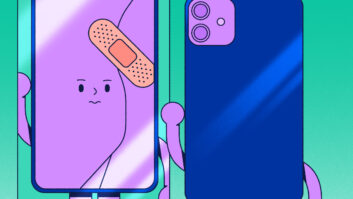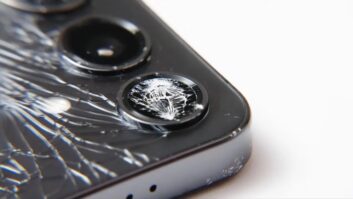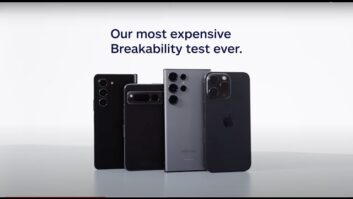MAHWAH, N.J. Aiwa America plans to return to profitability in the coming fiscal year, in part by refocusing on more profitable mid- to higher-priced products that are more clearly differentiated from lower-priced Chinese imports, said Hideki Tafuku, Aiwa America’s new president/CEO.
The company will also complete a reorganization by the end of March to further improve dealer support, he said.
Marketing general manager Eileen Toomey said that as part of Aiwa’s dealer-support changes, and to help dealers improve their sales forecasts, the company for the first time laid out its full-year promotional plans in advance, rather than on a piecemeal basis throughout the year.
Last year’s bottom line turned red because of severe products shortages, Tafuku said, which “are now behind us,” and because of “ever-declining unit prices,” mainly as a result of growing competition at the low end from products made in China. Shelf-system sales “were greatly affected by the emergence of more lower-end brands,” he pointed out.
“In 1999 in the U.S, we did OK. We made money,” he said. But last year, “we suffered a lot from component shortages” that created a “a huge amount of back-orders.” Most were in CD boomboxes and headphone CD players, but minisystem availability was also affected, Toomey said, adding that “the peak was in November, and December, and January got better.”
In late January, Aiwa America’s Tokyo-based parent also cited product-shortage-induced sales declines and falling wholesale prices in large part for its expected worldwide net loss of $318 million for the fiscal year ending March 31, according to Tokyo news reports. The loss would be the second consecutive annual loss for Tokyo-based Aiwa Co., whose operating loss for the previous fiscal year was $108 million.
Worldwide revenues are forecast to fall 10.4 percent to $2.51 billion for this fiscal year ending March 31, 2001, compared with a 6.2 percent decline for the year ending March 31, 2000.
Aiwa also blamed its woes on the yen’s appreciation against the U.S. dollar and euro and a profit squeeze caused by rising component prices.
Last year, Aiwa America lost unit and dollar share in the shelf system, home audio and portable audio markets at retail and found its retail-level sales falling in all those categories, according to one research company, but Aiwa nonetheless retained its respective market-share ranks of one, two and three in those categories.
For its part, Aiwa said NPD Intelect statistics show Aiwa’s home audio market share, based on a 12-month moving average through last November, was 10.2 percent, putting it in the No. 2 spot. Portable audio share for that period was 9 percent, putting it in third place, and combined home and portable share was 9.7 percent for a second-place showing, Aiwa said.
For the coming fiscal year beginning April 1, Tafuku said, Aiwa America expects to post “slight growth” at best, in line with Consumer Electronics Association forecasts. The company will also maintain its market-share percentages in all home and portable categories and is targeting market-share gains in car audio, where its share is admittedly small.
More important, the company will “pay more attention to the bottom line” to return the U.S. operation to profitability, he said.
Worldwide, Aiwa is reorganizing by paring its 10,000-person workforce by 400, and it’s planning to work with Sony to obtain expertise in materials procurement, logistics and human resources, according to press reports. Sony owns 50.6 percent of Aiwa. As of Jan. 1, the Tokyo parent also got a new president, Masayoshi Morimoto, who was an executive VP with Sony.
In Japan, Aiwa Co. is reorganizing into eight product divisions that will be “responsible from design to production, logistics, sales and aftersale service,” Tafuku said. “Even the engineers in Tokyo are expected to have a business mind.”
In the United States, Aiwa America will reorganize somewhat differently, but the goal will also be to attune management at all levels to customer needs.
“In the U.S., each product manager will be responsible for a category, but each will also be responsible for [select] retail accounts. The product managers will visit accounts more often on their own or with salespeople to learn about all the needs of a retailer,” Tafuku explained. “We will expect product managers to not just concentrate on the hardware; they should also have a business mind.”
Similarly, said Toomey, sales managers could be joined by logistics managers, service managers and marketing managers to meet dealers as part of a team effort to better service customers. Added Tafuku, “It’s very difficult for any one person to handle all issues with key dealers.”
The U.S. reorganization will be completed by March 31.
As part of its effort to improve profitability, Aiwa America wants to expand a program initiated last year in which products are shipped from the port of entry directly to a retailer’s warehouses, said Toomey. “All of the big retailers are looking at this,” she said. “Our logistics manager will go out to meet with accounts to ask them if that’s better for them, and we’ll share in the efficiencies.”
As part of the profit drive, Aiwa will reinforce its value-added position with promotions that retailers can use to maintain price points and bring customers into the store, Toomey said. Seven national programs, each at different times of the year, will include giveaways such as a $25 gasoline card to purchasers of select car audio products. Other prizes include Amex gift certificates and Swiss Army watches.
To entice customers into returning to Aiwa dealers, the company initiated an Aiwa Awards program. With each purchase of an Aiwa product, a consumer is awarded points good toward a year-end award of another Aiwa product, Toomey said. Consumers who sign up will be notified regularly by postcard of Aiwa’s next promotional event. The goal is “to maintain price points and get customers to return to the same retailer,” she said.
To further solidify dealer relations, the company will hold dealer meetings in March rather than July or August to incorporate dealers’ ideas sooner during the product-development cycle, Toomey said.
In shifting product development to emphasize the mid and high ends, the company will “clearly differentiate” itself from the budget-end China-made product and other manufacturers, said Tafuku. “Unless we do so, it will be difficult to maintain or increase share.”
At the very low end, however, “it’s very difficult to offer differentiated products with added value at $79 to $99,” he said. Added Toomey, “It’s not a question of whether we can afford to do so but we want to elevate the Aiwa brand image.”
As part of its differentiation drive, Aiwa plans to “strengthen its manufacturing sites in Japan to develop high-technology items and expertise to more effectively utilize new technologies,” Tafuku said. As a result, more step-up products could be built in Japan.
“We are not withdrawing from the Far East [factories in Malaysia, Indonesia and China], but we will strengthen the Japanese sites so that the ratio of products made outside Japan is slightly reduced.” Until “very recently,” he said, about 80 percent of Aiwa’s volume was produced outside Japan.













